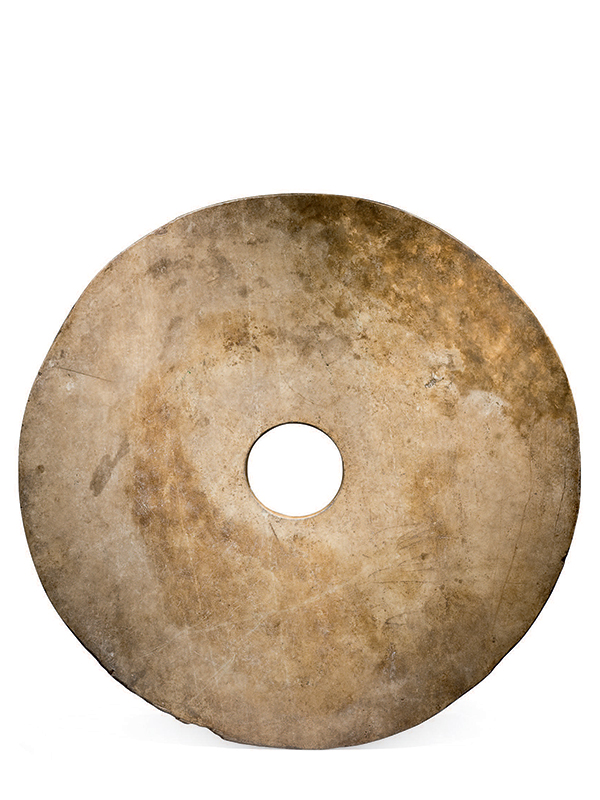Jade Disc, Bi
An exceptionally large jade bi-disc of circular form and uneven thickness, with a round aperture cut in the centre. The stone is of predominantly brown tone with large areas of calcification, retaining its original appearance in places. The disc is completely unadorned and the surface is smoothly polished on both sides.
This high quality jade bi disc is among the largest examples ever made that we have seen. In the Liangzhu culture, circular jades were ritual objects used in all kinds of religious ceremonies. Most of the discs that come from Liangzhu tombs seem to have been made in standard sizes, ranging from about 14 to 27 cm in diameter.[1] Bi discs of the present large size are extremely rare. A closely comparable bi disc of the Liangzhu culture, slightly smaller than the present one, measuring 35 cm in diameter, is in the collection of the British Museum.[2] Another comparable bi disc measuring 32.5 cm in diameter and particularly remarkable for its incised bird pattern, is in the collection of the Victoria and Albert Museum.[3] A smaller Liangzhu-culture bi disc, 31.6 cm in diameter, of comparable quality and colour and inscribed with a poem by the Qianlong emperor (1736 .1795), is in the collection of the Palace Museum, Beijing.[4]
- Rawson, J., Chinese Jade.From the Neolithic to the Qing, The British Museum Press, London, p. 134
- Rawson, J., op. cit., no. 4:3, pp. 133.4
- Victoria and Albert Museum online collection archive, museum no. A.42.1936
- Compendium of Collections in the Palace Museum-Jade. Vol. I, Neolithic Age, The Forbidden City Publishing House, Beijing, 2010, no. 38, p. 80

